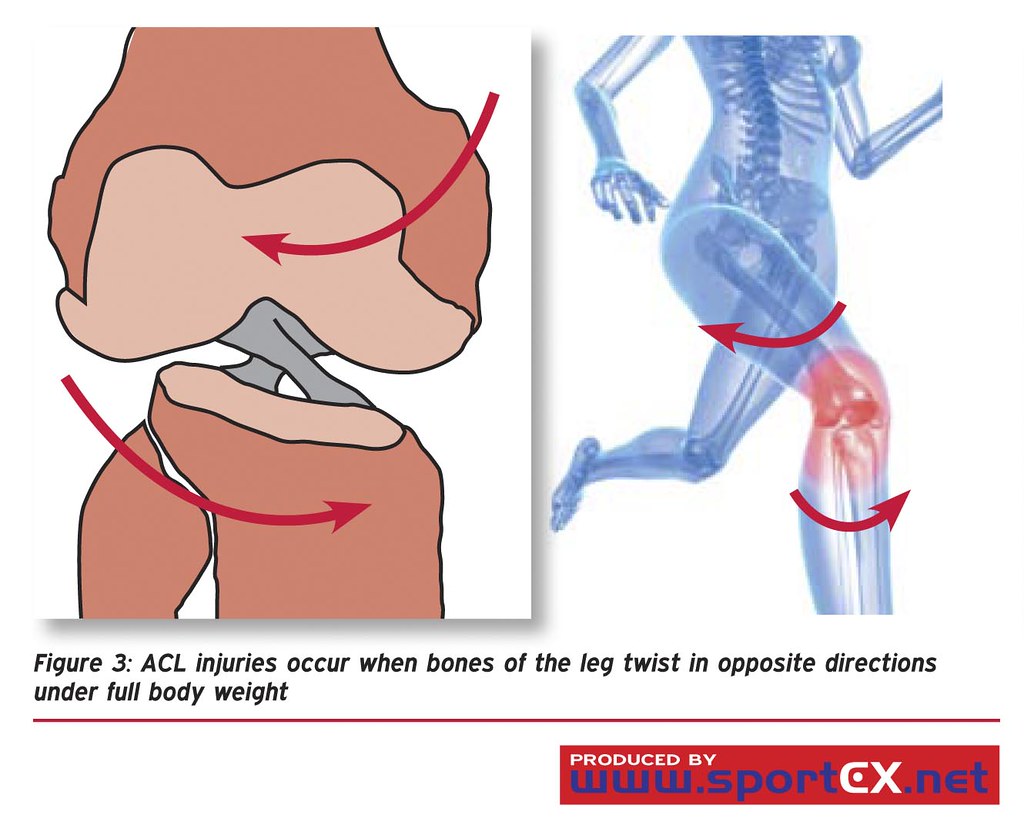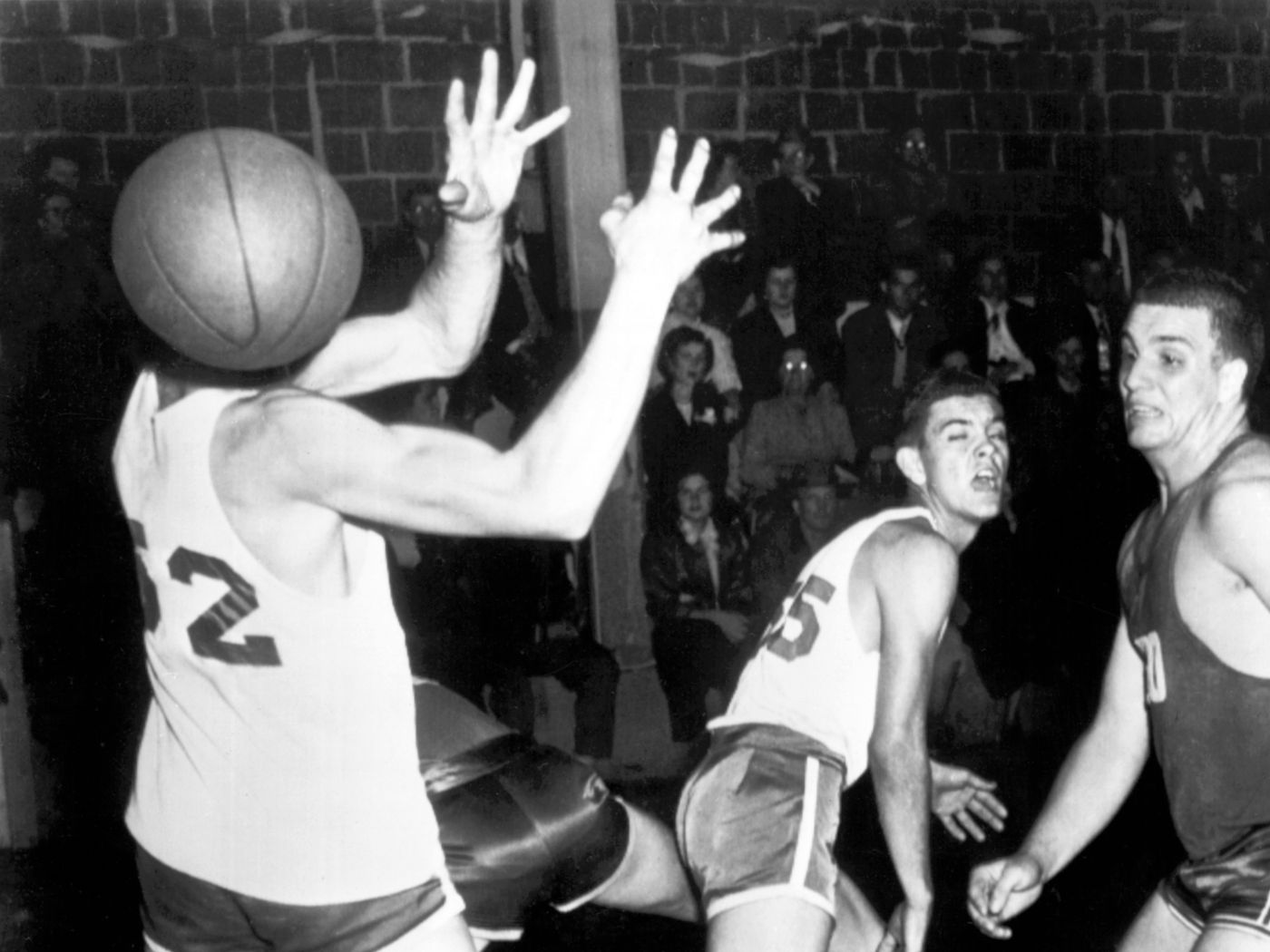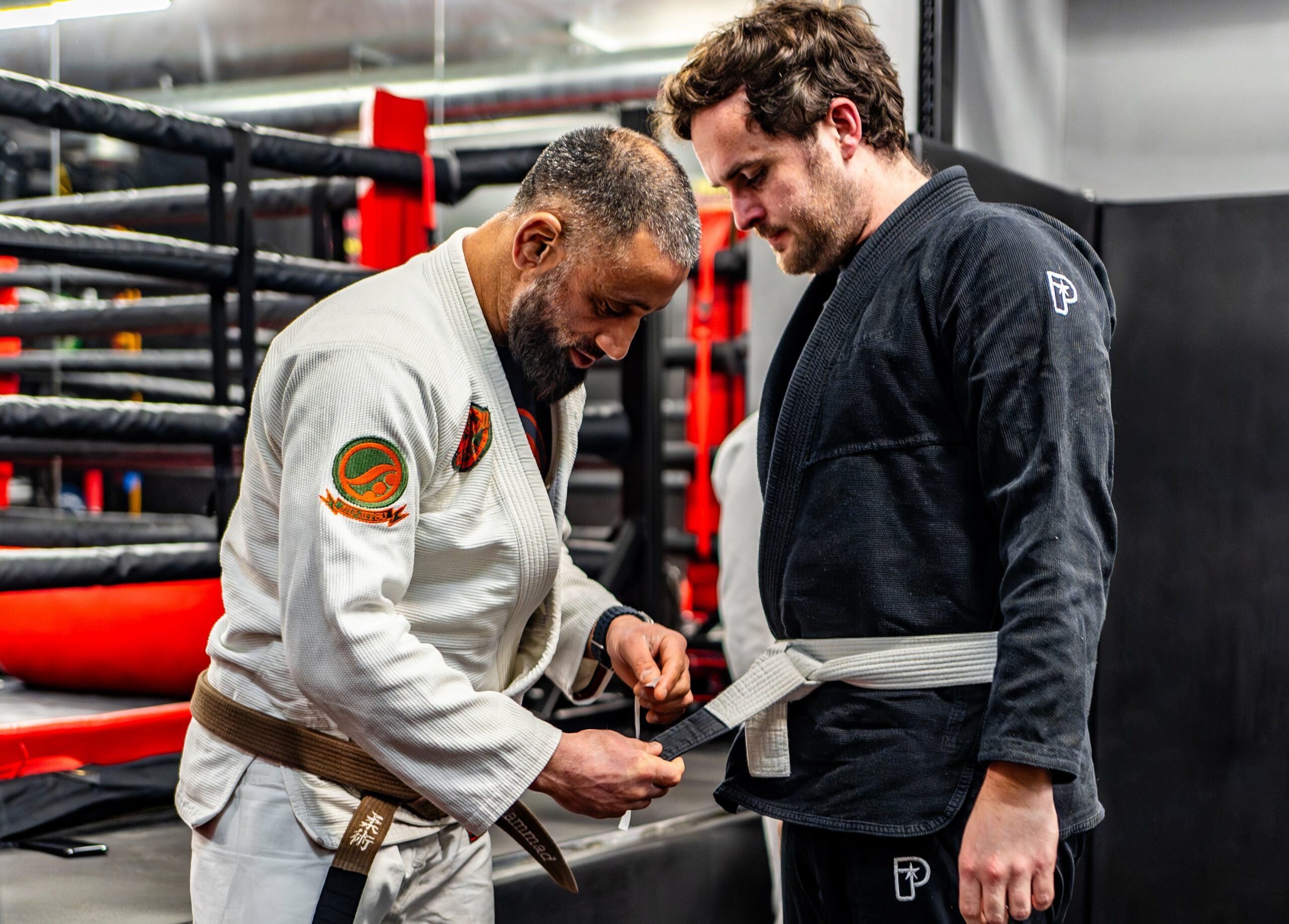What are the Differences between Contact And Non Contact Sports? Unveiling the Distinctive Elements
Contact sports involve physical contact between players, while non-contact sports do not involve physical contact between players. In contact sports, players actively engage in physical contact with opponents, such as tackling or blocking, while non-contact sports rely on skills, strategy, and finesse without direct physical contact.
These differences between contact and non-contact sports can significantly impact gameplay, injury risks, and the overall experience for athletes. Understanding these distinctions is crucial for individuals interested in participating in or spectating these sports.
Understanding The Physicality And Competitive Edge
Contact and non-contact sports differ in terms of physicality and competitive edge. Contact sports involve direct physical contact between players, such as tackling in football, while non-contact sports like swimming rely on skill and strategy without physical collisions. Understanding these distinctions is crucial in selecting the right sport based on personal preference and interest in competition.
Aggressive gameplay and physical confrontation:
- Contact sports are known for their aggressive gameplay and physical confrontation. Players engage in direct physical contact with opponents, aiming to gain an advantage or prevent the opposing team from scoring. This level of physicality adds a thrilling and intense element to these sports.
- In contact sports, athletes use their bodies not only to control the ball or achieve a goal but also to actively engage with their opponents. This makes the gameplay highly dynamic and requires players to have excellent physical strength, endurance, and resilience.
- The physicality involved in contact sports often leads to collisions, tackles, and body checks, which are instrumental in achieving strategic objectives. These actions can be exhilarating for both the players and spectators, adding an element of excitement to the game.
Emphasis on contact and collision:
- Contact sports place heavy emphasis on physical contact and collisions between players. The ability to handle and initiate physical contact is crucial for success in these sports.
- The main objective in contact sports is to overpower opponents and impose physical dominance. In football, for example, players use their bodies to block opponents, forcefully tackle them, and gain control of the ball.
- Contact and collision create strategic opportunities for players. A well-executed tackle or block can disrupt the opponent’s attack or create space for teammates to advance. These moments require not only physical strength but also intelligent decision-making and timing.
Examples of popular contact sports: are football, rugby, and boxing:
- Football, also known as soccer, is one of the most popular contact sports worldwide. Players engage in physical confrontations to gain control of the ball, execute tackles, and defend against opponents. The physical demands of football include running, jumping, and maneuvering while maintaining balance and agility.
- Rugby is another highly physical contact sport. It combines elements of running, tackling, passing, and kicking, with a strong emphasis on physicality. Players use their bodies to tackle opponents and maintain possession of the ball, showcasing their strength and endurance.
- Boxing is an individual contact sport that focuses solely on combat between two opponents. It requires exceptional physical conditioning, technique, and mental fortitude. Boxers deliver punches to their opponents, aiming to knock them out or accumulate points through a controlled display of skill and power.
In contact sports, the physicality and competitive edge create an intense and adrenaline-filled environment. The strategic use of contact, collision, and physical strength play significant roles in achieving success. Whether it’s football, rugby, or boxing, these sports offer a thrilling experience for both participants and spectators alike.

Credit: www.sportskeeda.com
Focusing On Skill And Technique
Contact sports involve physical interaction between players, emphasizing skill and technique in a competitive setting. Non-contact sports, on the other hand, focus more on individual performance and precision, without direct physical confrontation. These differences determine the strategies, training methods, and rules that govern each sport.
Lack Of Physical Confrontation:
- Non-contact sports generally lack physical confrontation or direct physical contact between players.
- Players in non-contact sports do not engage in physical battles or attempts to physically tackle or overpower opponents.
- The emphasis in these sports is on individual skill and technique, rather than physicality or aggression.
Emphasis On Strategy And Precision:
- In non-contact sports, strategy and precision play a crucial role.
- Athletes in these sports focus on developing and executing strategies that maximize their chances of success.
- Precision and accuracy are key elements that athletes must master to excel in non-contact sports.
- Instead of relying on physical strength or aggression, athletes must rely on their mental acuity and the ability to make split-second decisions.
Examples of popular non-contact sports:
- Golf: Golf is a classic non-contact sport that requires precision, control, and strategic decision-making. Players must calculate distances, adjust for wind conditions, and execute precise swings to accurately hit the golf ball into the desired target.
- Swimming: Swimming is a non-contact sport that places great emphasis on technique and efficiency. Swimmers must focus on proper form, streamline their bodies in the water, and execute powerful yet controlled strokes to achieve maximum speed.
- Gymnastics: Gymnastics is an elegant and highly technical non-contact sport. Athletes must combine strength, flexibility, and balance to execute graceful and precise movements on various apparatuses such as the balance beam, uneven bars, and floor exercise. Their routines require immense focus and control.
By focusing on skill and technique, non-contact sports provide athletes with unique challenges and opportunities for growth. With a lack of physical confrontation, these sports demand strategic thinking and precision execution. Examples like golf, swimming, and gymnastics showcase the mastery of skill and technique needed to succeed in these athletic endeavors.
So, if you’re looking for a sport that highlights mental acuity and the pursuit of perfection, exploring the world of non-contact sports might be the perfect fit for you.
Evaluating The Risk Of Injuries
Contact sports involve physical contact between players, increasing the risk of injuries. On the other hand, non-contact sports prioritize skill and strategy, minimizing the chances of direct collisions and resulting in fewer injuries overall. Evaluating the risk of injuries in both types can help athletes make informed choices.
Contact and non-contact sports bring different levels of risk when it comes to physical harm and injuries. Let’s delve into the key aspects that differentiate the two in terms of potential for injuries, the usage of protective gear and equipment, as well as common injuries associated with contact sports.
Potential For Physical Harm And Injuries:
- Contact sports involve direct physical interactions between players, increasing the risk of injuries.
- Non-contact sports focus more on individual performance, reducing the chances of direct physical harm.
- Collision, tackling, and physical contact can lead to more severe injuries in contact sports.
- Non-contact sports prioritize technique, agility, and skill, resulting in a lower risk of injury.
Protective Gear And Equipment Usage:
- In contact sports, athletes wear specific protective gear and equipment to minimize the risk of injuries.
- For example, helmets, shoulder pads, mouthguards, and shin guards protect various parts of the body.
- This gear aims to absorb impacts, reduce the chance of fractures, and prevent head injuries.
- Non-contact sports generally require less protective gear.
- Basic equipment like helmets or knee pads might be used for safety in certain activities, such as cycling or skateboarding.
Examples Of Common Injuries In Contact Sports:
Contact sports involve a higher potential for injuries due to their nature. Here are some commonly encountered injuries:
- Concussions: A head injury resulting from a blow or jolt to the head. Often associated with contact sports like football, rugby, and boxing.
- Sprains: Ligament damage caused by twisting or wrenching movements. Common in sports like basketball, soccer, and wrestling.
- Fractures: Broken bones resulting from impacts, collisions, or falls. Commonly seen in contact sports such as hockey, rugby, and martial arts.
Evaluating the risk of injuries is an essential aspect of understanding the differences between contact and non-contact sports. While contact sports have a higher potential for physical harm and injuries, they also emphasize the use of protective gear and equipment to minimize risks.
Understanding the common injuries in contact sports, like concussions, sprains, and fractures, helps athletes and officials prioritize safety measures and implement appropriate training programs.
Minimizing The Risk Of Injuries
Contact sports involve direct physical contact between players, increasing the risk of injuries. Non-contact sports, on the other hand, eliminate this risk by focusing on skill and strategy rather than physical confrontation. Understanding the differences between these sports can help minimize the risk of injuries in both recreational and professional settings.
Sports are a fantastic way to stay fit and have fun, but not all sports are created equal when it comes to the risk of injuries. Some sports involve direct contact with opponents, while others do not. In this blog post, we will explore the differences between contact and non-contact sports, focusing on how the latter minimizes the risk of injuries.
Lower Likelihood Of Physical Harm
Non-contact sports are characterized by a lower likelihood of physical harm compared to contact sports. Here are some reasons why:
- No direct contact: In non-contact sports, players are not allowed to physically touch opponents, reducing the risk of collisions and injuries associated with direct contact.
- Emphasis on skill and strategy: Non-contact sports, such as athletics, swimming, and gymnastics, prioritize skill, technique, and strategy over physical contact. This allows participants to focus on perfecting their form without the added risk of physical harm.
- Rules and regulations: Non-contact sports often have strict rules and regulations in place to ensure fair play and minimize the risk of injuries. These rules may involve penalties for dangerous behavior or restrictions on certain movements or actions.
Importance Of Proper Technique And Form
In non-contact sports, proper technique and form play a crucial role in minimizing the risk of injuries. Here’s why:
- Preventing strains: By using the correct technique, athletes can reduce the strain and stress placed on their muscles, joints, and ligaments, decreasing the likelihood of strains and sprains.
- Enhancing performance: Proper form allows athletes to perform at their best without overexerting themselves or putting unnecessary strain on their bodies. This not only improves performance but also reduces the risk of injuries caused by fatigue or poor execution.
- Progressive training: Non-contact sports often involve progressive training programs that gradually increase the difficulty and intensity of workouts. This approach helps athletes build strength and endurance while minimizing the risk of overuse injuries.
Examples Of Common Injuries In Non-Contact Sports
Although non-contact sports generally have a lower risk of injuries, it doesn’t mean they are entirely injury-free. Here are some common injuries that can occur in non-contact sports:
- Strains: Athletes can experience strains or pulls in their muscles when they overextend or stress them beyond their limits. This commonly occurs in activities that involve sudden bursts of speed or changes in direction.
- Repetitive stress injuries: Non-contact sports that require repetitive movements, such as running or swimming, can lead to overuse injuries. These injuries can include tendinitis, stress fractures, and bursitis, which result from constant repetitive stress on specific areas of the body.
- Impact-related injuries: Although non-contact sports may not involve opponent contact, there is still a risk of impact-related injuries. For example, a gymnast can stumble during a routine and land awkwardly, resulting in a sprained ankle or wrist.
Overall, non-contact sports are generally safer and have a lower risk of physical harm compared to contact sports. By focusing on proper technique, and form, and adhering to rules and regulations, athletes can enjoy the benefits of these sports while minimizing the inherent risks.
So, whether you prefer the thrill of a contact sport or the grace of a non-contact sport, remember to prioritize safety and enjoy the game!

Developing Strength, Endurance, And Mental Toughness
Differences exist between contact and non-contact sports, such as the level of physicality and the potential for injury. Contact sports involve direct physical contact between opponents, requiring strength, endurance, and mental toughness, while non-contact sports focus more on speed, agility, and precision.
Both types of sports offer unique challenges and opportunities for athletes to excel.
Building Physical Strength And Endurance
- Contact sports place a strong emphasis on building physical strength and endurance.
- Athletes in contact sports need to have robust muscles and excellent stamina to withstand the physical demands of the game.
- They engage in various strength training techniques, such as weightlifting, resistance exercises, and plyometrics, to develop their muscles.
- Endurance training, including cardiovascular exercises like running and swimming, helps them build the stamina and lung capacity required to perform at their best for the entire duration of the game.
Mastering Tactical And Strategic Skills
- Contact sports require athletes to master tactical and strategic skills to outwit their opponents.
- Players must possess a deep understanding of the game’s intricacies, including offensive and defensive strategies, game plans, and team coordination.
- They use their mental acuity to analyze the situation, predict opponents’ moves, and make split-second decisions.
- Through practice and experience, athletes develop a heightened sense of awareness and enhance their decision-making abilities in high-pressure situations.
Examples Of Crucial Skills In Contact Sports: Tackling, Blocking, Evading
- Tackling: In contact sports such as football, rugby, and American football, tackling is a vital skill used to bring down opponents. It involves effectively using body positioning, timing, and technique to stop the opposing player’s progress.
- Blocking: Contact sports like basketball and American football require players to use blocking techniques to impede the opponent’s movement. This involves using physical strength, footwork, and positioning to create barriers and protect teammates.
- Evading: Contact sports like boxing and MMA (Mixed Martial Arts) emphasize the importance of evading punches and strikes from opponents. Athletes learn techniques such as bobbing, weaving, and sidestepping to avoid incoming attacks while maintaining their defensive stance.
In contact sports, the development of physical strength, endurance, and mental toughness is crucial for athletes’ success. By honing these attributes, athletes can perform at their peak, outperform their opponents, and achieve their desired results. So whether it’s building robust muscles, improving stamina, or mastering tactical skills, contact sports provide a platform for individuals to push their boundaries and continually enhance their abilities.
Enhancing Technique, Precision, And Creativity
Enhancing technique, precision, and creativity are key differences between contact and non-contact sports. Contact sports involve physical confrontation, promoting athleticism and strategy, while non-contact sports emphasize skill, accuracy, and artistic expression. Both types offer unique advantages, catering to different preferences and abilities.
Focusing On Technical Proficiency:
- In contact sports, physical strength and endurance play a significant role, often overshadowing the importance of precise technique. However, in non-contact sports, technique takes center stage, emphasizing the mastery of specific skills.
- Developing proper technique requires focus, practice, and attention to detail. Athletes in non-contact sports continuously work on refining their technique to achieve optimal performance.
Emphasizing Precision And Accuracy:
- Non-contact sports demand a high level of precision and accuracy in executing various skills. Athletes must cultivate an acute sense of timing and control to achieve the desired outcome.
- Precise and accurate movements contribute to improved efficiency and effectiveness in non-contact sports. Athletes must strive for consistency and the ability to replicate their actions with precision.
Examples of Crucial Skills in Non-Contact Sports:
- Swing: In sports like golf and baseball, mastering the swing is essential for success. Each movement must be consistent, precise, and fluid to generate optimal power and accuracy. The proper swing technique involves a combination of body mechanics and timing.
- Stroke: In disciplines such as swimming, rowing, and tennis, the stroke is a fundamental skill. Athletes must focus on perfecting their stroke technique to achieve maximum efficiency in the water or on the court. Proper coordination, body position, and rhythm are crucial for achieving speed and endurance.
- Routine Execution: In sports like gymnastics or figure skating, routines involve a series of precisely choreographed movements. Athletes must time their actions to perfection, ensuring seamless transitions and flawless execution of complex maneuvers. Precision, control, and creativity intertwine in these sports to captivate audiences and impress judges.
In non-contact sports, the pursuit of technique, precision, and creativity sets the stage for extraordinary performances. Athletes dedicate countless hours to honing their skills while also pushing the boundaries of their creativity. By working meticulously on technical proficiency, emphasizing precision, and mastering crucial skills, athletes in non-contact sports pave the way for exceptional sporting achievements.
Examining The Role Of Teamwork In Sports
Teamwork plays a significant role in both contact and non-contact sports, although their nature differs. While contact sports involve physical interaction and tackling, non-contact sports rely on coordination, strategy, and communication among teammates. Both types of sports require teamwork to achieve collective goals and ensure success on the field.
Team Collaboration And Coordination In Contact Sports:
- Teamwork is a fundamental aspect of contact sports, as it involves close collaboration and coordination among team members. Here’s how it plays a crucial role:
- Effective communication: Contact sports require constant communication between players to coordinate movements, set up plays, and anticipate each other’s actions. This ensures that the team operates as a cohesive unit, maximizing their chances of success on the field.
- Trust and reliance: In contact sports, players must trust their teammates to perform their assigned roles. This trust allows them to rely on each other for support, whether it’s passing the ball, defending together, or executing plays seamlessly.
- Strategy implementation: Contact sports often follow specific strategies or game plans. Teamwork enables players to execute these strategies effectively, making the most of their collective strengths and compensating for individual weaknesses.
- Emotional support: Contact sports can be physically and mentally demanding. Teammates provide emotional support, motivating each other during challenging moments, boosting morale, and creating a sense of unity among the team.
Individual Performance And Self-Reliance In Non-Contact Sports:
- Non-contact sports, on the other hand, place more emphasis on individual performance and self-reliance. Here’s why:
- Personal skill development: Non-contact sports allow athletes to focus on their individual skill development without relying heavily on their teammates. They have the opportunity to enhance their technique, agility, speed, and overall performance through individual training.
- Self-reliance: In non-contact sports, athletes are primarily responsible for their own performance. They must rely on their own abilities and decision-making skills to achieve success. This encourages a sense of individual responsibility and self-discipline.
- Performance consistency: Unlike contact sports where individual performance may be affected by the performance of others, non-contact sports provide athletes with greater control over their performance. This consistency in individual performance contributes to their overall success.
- Mental focus: Non-contact sports require athletes to remain mentally focused throughout the game or event, as they often rely on their individual abilities to outperform competitors. This mental fortitude enhances their concentration and resilience.
Examples Of Contact Sports Promoting Teamwork: Basketball, Soccer, Hockey:
- Basketball: Effective teamwork is crucial in basketball as players rely on each other to pass the ball, set screens, and coordinate offensive and defensive strategies. Successful teams demonstrate seamless coordination and collaboration on the court.
- Soccer: In soccer, teamwork is essential for passing the ball, creating scoring opportunities, and defending against the opposing team. Players must communicate and coordinate their movements to execute offensive plays and maintain defensive positioning.
- Hockey: Hockey requires precise teamwork to maintain possession of the puck, create scoring chances, and coordinate defensive efforts. Effective passing, positioning, and understanding between teammates contribute to a team’s success on the ice.
Contact sports rely on team collaboration and coordination, with effective communication, trust, strategy implementation, and emotional support being crucial. On the other hand, non-contact sports emphasize individual performance and self-reliance, allowing athletes to develop personal skills and focus on consistency.
Examples of contact sports promoting teamwork include basketball, soccer, and hockey. These sports showcase the importance of unity, communication, and coordination among teammates for achieving success on and off the field or court.
Frequently Asked Questions Of What Are The Differences Between Contact and Contact Sports
What Is A Contact Sport?
A contact sport is a type of sport where physical contact between players is a fundamental part of the game. Examples include football, martial arts, and rugby.
What Is A Non-Contact Sport?
A non-contact sport is a type of sport where physical contact between players is not allowed or minimal. Examples include swimming, golf, and table tennis.
Is Soccer A Contact Sport?
Yes, soccer is considered a contact sport because players can use their bodies to make contact with other players in order to gain possession of the ball. However, excessive or dangerous contact is not allowed.
Conclusion
To sum up, understanding the differences between contact and non-contact sports is crucial for athletes, sports enthusiasts, and even parents. Contact sports involve physicality, aggression, and a higher risk for injuries, while non-contact sports prioritize skill, strategy, and cooperation. Each type of sport offers unique benefits and challenges.
Contact sports can build character, teach discipline, and promote camaraderie, but they also carry a greater potential for physical harm. On the other hand, non-contact sports focus on precision, mental agility, and teamwork, offering a safer option for those who want to avoid the risk of injuries.
Ultimately, the choice between contact and non-contact sports depends on personal preferences, individual capabilities, and the desire to strike a balance between the thrill of competition and the need for safety. Whether engaging in contact or non-contact sports, the most important aspect is to enjoy the experience and reap the physical and mental benefits they offer.




Hi,
I intend to contribute a guest post to your website that will help you get good traffic as well as interest your readers.
Shall I send you the topics then?
Best,
Julie Smith
yes send me it